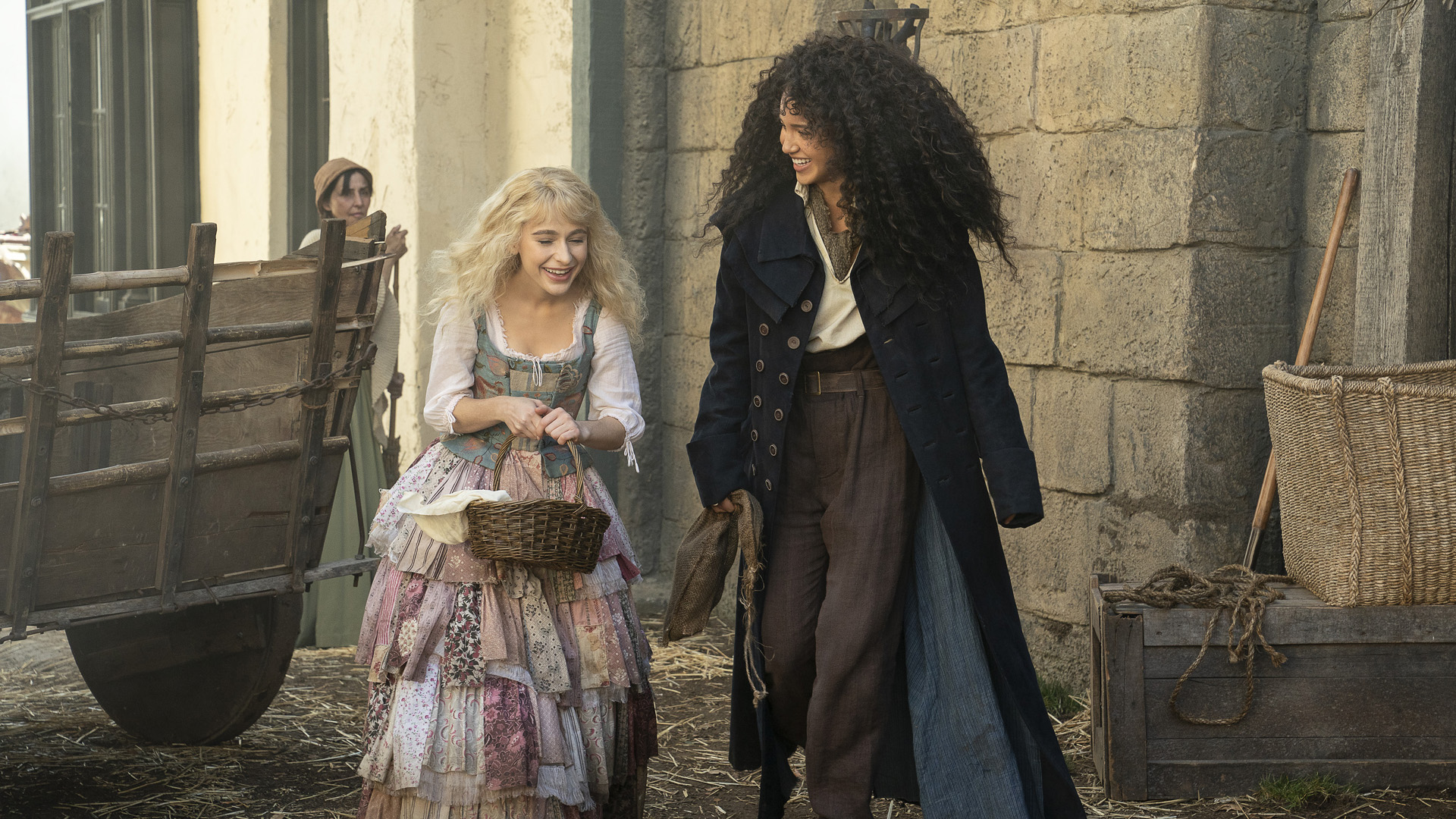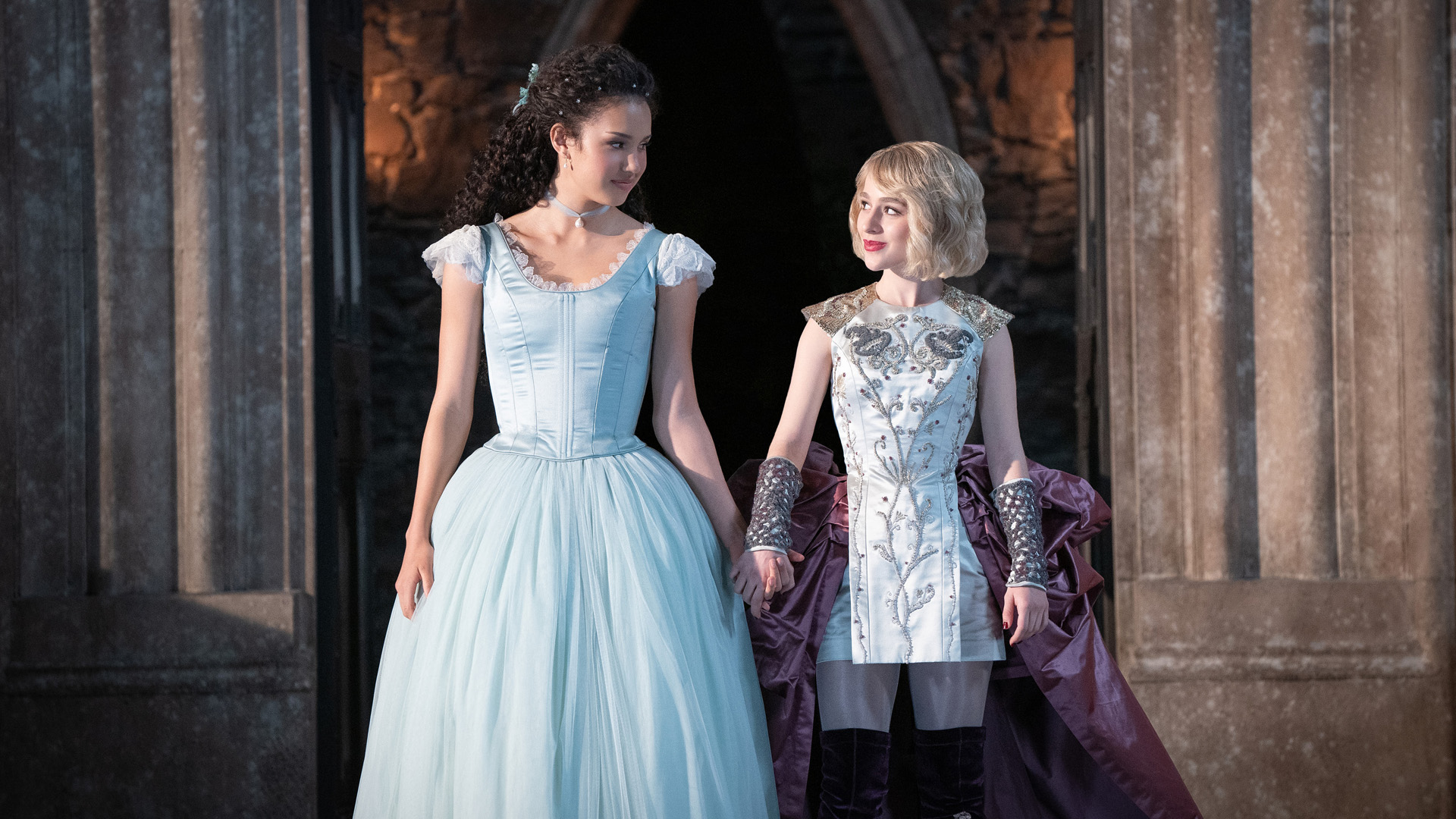A not-so-spellbinding young adult fantasy Netflix film: The School for Good and Evil review
With Harry Potter creator J.K. Rowling seemingly determined to destroy her legacy
– and the childhoods of everyone who grew up immersed in the world of Muggles, Hippogriffs, and Quidditch – there’s suddenly a gap in the market for a magical school fantasy which doesn’t come with any problematic baggage.
Abracadabra, The School for Good and Evil. On the surface, the latest big-budget original Netflix movie seems tailor-made to reel in disillusioned Potterheads. There’s a Hogwarts-esque castle in which, as its title suggests, both the spell-casting heroes and villains of the future are trained. There are skeletal winged creatures, forbidden forests, and students who can shapeshift themselves into animals. Equally, like its counterpart, The School for Good and Evil's cast boasts more household names than you can shake a wand at. Even its narrator, Cate Blanchett, is a seven-time Academy Award nominee.
Even so, Netflix's latest young adult (YA) fantasy offering isn't as enthralling as it appears. There's plenty to like about it, sure, but its positives are counterbalanced by what it gets wrong – and that'll make it an average watch for most viewers.

The School for Good and Evil is based on the same-named Soman Chainani novel that first hit shelves in 2013. Back then, Rowling was still very much a national treasure instead of a national embarrassment.
However, Netflix's newest flick has been stuck in development hell since that time, with Universal bagging and then relinquishing the rights before Netflix spotted the potential for a series that could possibly spawn a total of six chapters. Hey, Hollywood is littered with the ghosts of YA franchise-starters that failed to even get a sequel, so The School for Good and Evil would've been in good company if it failed to get off the ground. You know, with one of those spell-infused broomsticks.
The movie does have a unique selling point, however. Unlike Inkheart, Eragon, Stormbreaker, and every other late-’00s flop that tried to capitalise on the Harry Potter phenomenon, its protagonists are teenage girls. Even more unusually, they’re not played by actresses whose own school years are blatantly at least a decade behind them; a rare but satisfying casting decision in today's industry.
Broadway regular Sophia Anne Caruso and Sofia Reyes (best-known as transfer student Gina in the ridiculously-titled High School Musical: The Musical: The Series) star as Sophie and Agatha, two best friends kidnapped from the hometown they’ve never stepped foot outside of to the titular academy by a mythical bag of flying bones named a stymph. Still reeling from the death of her mother, picture-perfect Sophie has always aspired to escape her humdrum existence and become a Barbie-esque princess. The more dishevelled Agatha, on the other hand, is content to spend her days sampling her witch mother’s recipes and petting her beloved black cat. Their destinations seem obvious.
Director Paul Feig struggles to fit in most of his ridiculously stacked cast
Much to their annoyance, though, Sophie is placed in the Nevers, a dark and dingy camp populated by weremen guards and sadistic teens who look like they’ve escaped from a My Chemical Romance video. Agatha believes her fate is even worse: she’s been sent to the Evers where dashing young princes (Jamie Flatters’ son of Camelot) and the colour fuchsia reign supreme. Has there simply been an unfortunate clerical mix-up? Or, more likely, are the two heroines about to embark on a rollercoaster journey of self-discovery?
The simplistic life lessons learned during these voyages – 'Be true to who you are,' 'Value the meaning of friendship,' and 'Don’t let your mind be poisoned by an evil spirit with a 200-year-old vendetta' – would suggest we’re still in the upper reaches of the Disney Channel demographic. Yet some tweens may find themselves hiding behind the sofa whenever the film strays into the realm of PG-13 horror.
There’s some particularly nightmarish imagery on display in the Trial by Tale (essentially a fairytale take on The Hunger Games), with scenes ranging from sentient pansies that threaten to sink their piranha-like teeth into Sophie to the axe-wielding pumpkin-headed scarecrow. Also watch out for the fire-breathing monstrosity that suddenly emerges from a Never student’s tattoo, one of several highly creative set pieces which offers some respite from all the teenage melodrama.

Indeed, although director Paul Feig admits to initially having reservations about his world-building capabilities, The School for Good and Evil often impresses on a visual level. Sure, there’s still some ropey CGI (see the inevitable climactic showdown). But Feig’s insistence on filming as many scenes as possible in real places – mostly Belfast landmarks, such as St. Anne’s Cathedral and The Ulster Folk Museum – and clever use of Art Nouveau gives the film a distinct, lived-in feel far removed from the usual green screen aesthetic, if such a term can be used.
As the man behind Bridesmaids, Spy and, most divisively, 2016's all-female Ghostbusters, Feig has been an admirable ally of female-empowering comedy. So it’s slightly disappointing he doesn’t afford his two leads many snappy zingers, and that their girl power narrative gets derailed by a fight over a boy. Agatha and Sophie possess plenty of sass and fearlessness – see how the former coolly deals with being held by gunpoint. Most of the comic relief, though, is provided by the bit-players: Peter Serafinowicz’s over-sized gnome, for example, or Earl Cave’s overenthusiastic emo Hort.
It’s a similar story with Kerry Washington and Charlize Theron’s warring Deans too. Do-gooder Professor Clarissa Dovey and evil counterpart Lady Lesso always look the part – the film’s immaculate costume design is worthy of an Oscar nod. Apart from the odd humdinger (“you’re not allowed to kill anyone until after graduation”), though they get little to chew the wondrous scenery with.
In fact, Feig also struggles to fit in most of his ridiculously stacked cast. The legend that is Michelle Yeoh appears for all of ten seconds as a disgruntled beauty teacher, while funnymen Mark Heap and Rob Delaney don’t even get the luxury of a single line. You can only assume their characters play bigger parts in any future instalments. Still, in a film which runs to a bum-numbing 147 minutes – seriously, when will filmmakers stop handing in their first draft? – there was still more than enough time to accommodate their talents this time round too. Drag Race fans may notice that, bizarrely, early first season eliminee Scaredy Kat aka Alex Cubb gets plenty of screentime as a rebellious Ever.
Our verdict
The School for Good and Evil undoubtedly has its fairy-tale heart in the right place. If only social media could accept its notion that the world is more nuanced than black and white.
Unless you were born after Harry Potter’s cinematic universe wrapped up, however, it’s unlikely to cast much of a spell. And that's a shame. As the introductory number to a potentially sizeable Netflix IP, The School for Good and Evil does plenty well, but equally flatters to deceive in other areas. For every magical use of CGI or extraordinary production design, there's a misuse of genuine talent or predictability to its YA-positioned plot. Expect The School for Good and Evil, then, to join the pile of 'watch it on release day and never think of it again' Netflix originals that the streaming giant has routinely pumped out in recent times.
The School for Good and Evil is available to stream now on Netflix.
0 comments:
Post a Comment